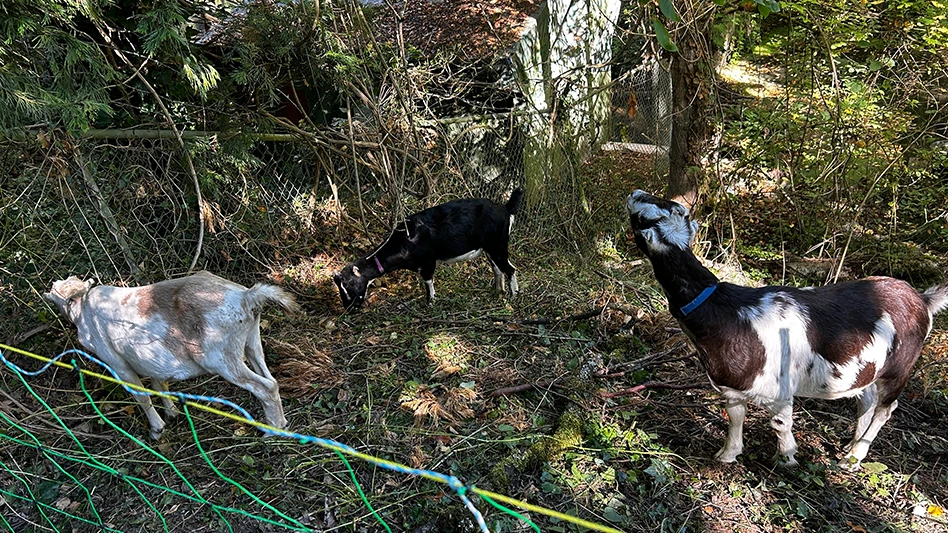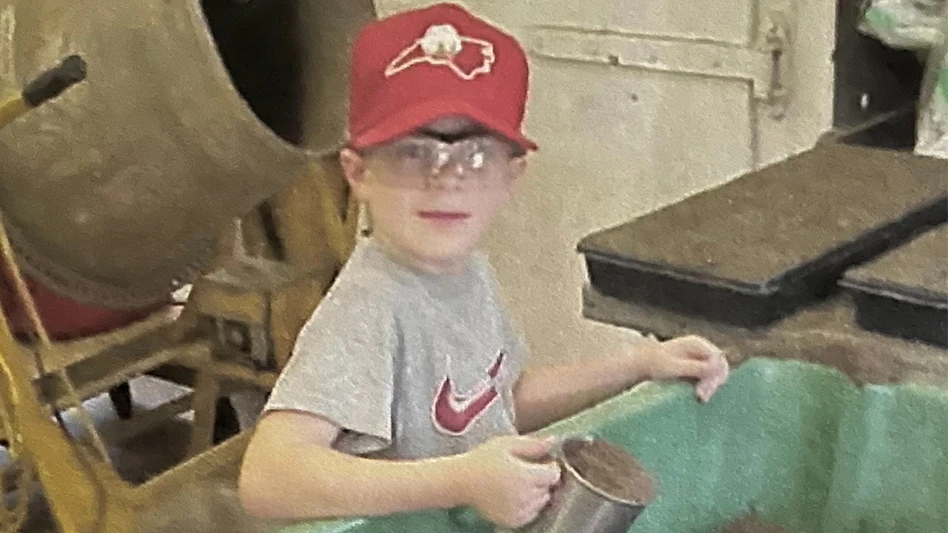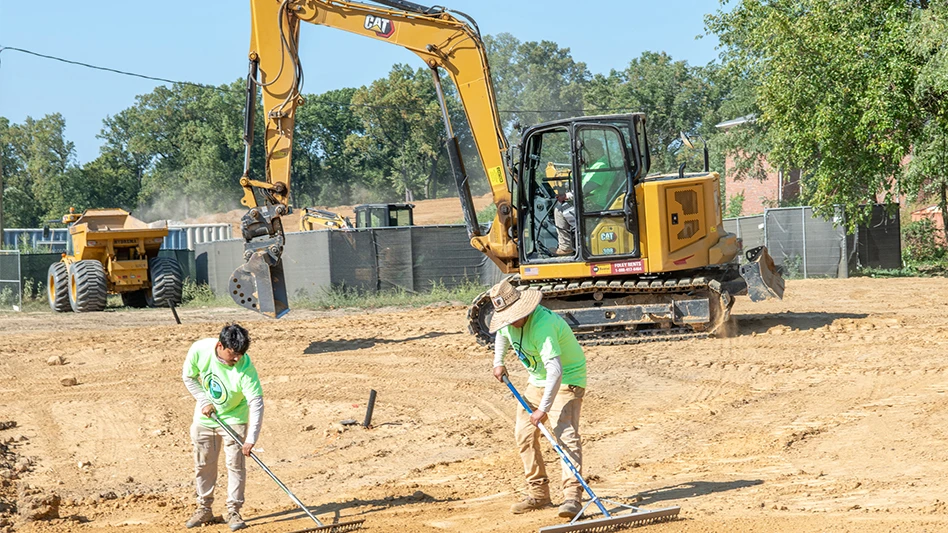 Sometimes it all goes back to the turf textbook. And, sometimes, superintendents rely too much on what they were taught, rather than experimenting with new methods. Today’s topic is whether a regular verticutting of your greens and fairways can eliminate the need to do a separate cultural practice to get rid of the thatch below the surface? Let’s let a couple turf professionals and one supplier weigh in on this subject and then you can decide.
Sometimes it all goes back to the turf textbook. And, sometimes, superintendents rely too much on what they were taught, rather than experimenting with new methods. Today’s topic is whether a regular verticutting of your greens and fairways can eliminate the need to do a separate cultural practice to get rid of the thatch below the surface? Let’s let a couple turf professionals and one supplier weigh in on this subject and then you can decide.
Darren J. Davis, director of golf course operations at Olde Florida Golf Club doesn’t believe the two can be interchanged. He uses both methods as cultural practices at his course in Naples, Fla. First, he does a light vertical mowing using a Toro Triplex greens mower with veritcut blades on it.
“We do that as needed to control leafiness on the putting surface and to increase the trueness of the ball roll,” Davis says. “It is an excellent tool if done light and infrequently to increase the speed, trueness and smoothness of the greens. I would never consider that a dethatching method though by any means. We are just barely getting to the surface, if at all … just pulling up the leaf blades, and, we often go in two directions.”
 Davis goes back to his turf school days and the definition of dethatching to explain why he believes you can’t use a verticutter to also dethatch. Instead, he prefers to use a Graden vertical mower, which he uses once a year on his greens.
Davis goes back to his turf school days and the definition of dethatching to explain why he believes you can’t use a verticutter to also dethatch. Instead, he prefers to use a Graden vertical mower, which he uses once a year on his greens.
“I hear some people talking about these vertical mowers you can use to detach, but I go back to turf school and the definition of thatch,” he says.
“To dethatch means getting into the thatch, which is below the surface, and blades on a vertical mower don’t do that,” Davis says. “Instead, I use a walk-behind Graden unit once a year on my greens. I use a 2-millimetre blade at 1-inch spacing and at a quarter-inch deep. This lets me cut all the way through that thatch. The Graden has a saw-like blade on it and it cuts through the thatch and pulls it all up. The amount of thatch the Graden can pull up is tremendous. I recommend it as an excellent dethatching tool.”
Matt Shaffer, director of golf course operations, at Merion Golf Club in Ardmore, Pa., takes a bit of a different approach to verticutting. He can’t imagine using venting and light verticutting in the same sentence. Shaffer goes back to the textbook and to his learned definitions to explain what makes the most sense from a turf theory point of view.
 “When I think of venting, it is an air shaft open or filled with sand,” he explains. “Light verticutting, for me, is grooming. Perhaps it is just verbiage, but grooming for me means removing leaf tissue, whereas verticutting means removing sloughed off leaves and old roots or thatch. I groom to increase speed and smoothness on my greens.”
“When I think of venting, it is an air shaft open or filled with sand,” he explains. “Light verticutting, for me, is grooming. Perhaps it is just verbiage, but grooming for me means removing leaf tissue, whereas verticutting means removing sloughed off leaves and old roots or thatch. I groom to increase speed and smoothness on my greens.”
When your groomers are set at the effective depth you can’t see any lines, Shaffer adds. “I verticut to remove thatch, you will see the grooves whether you chose to leave them open or topdress them shut with sand,” he says. “I vent to bridge the gap between full-blow aeration. You won’t see these for long especially if you roll right afterwards. I aerate to remove earthy material and replace with sand to increase my percolation and to place amendments deep in the profile. If you can’t see the hole, then you haven’t aerated. In my opinion, all of these are independent actions that aren’t the same.”
According to some suppliers, if done frequently, verticutting can replace the need to dethatch.
David Ramirez, Ariens Co. manager of product training, says a light, frequent verticutting will provide enough venting to alleviate the need for superintendents and maintenance crews to dethatch. The key word, though, is frequent.
“If you wait too long, then the need for dethatching is necessary,” Ramirez explains. “Superintendents should try to implement a frequent verticutting process as the clean-up time after dethatching is brutal.”
Ramirez believes verticutting and dethatching are essentially the same thing. “It’s like asking a superintendent, ‘Do you believe that you should grind or do a touch-up grind?’ I believe the answer comes from their schooling,” he says. “They come out of school with an answer and it just sits in their brain and no matter what anyone tells them, their way is the right way.”
According to Ramirez’ way of thinking, the only difference between the two depends on the application and the equipment used. Ariens tow-behind verticutter is one of its best-selling products and Ramirez says golf course superintendents like it for three reasons.
“First, its aggressiveness,” he says. “It aggressively gets the thatch out. The blades are accepted by superintendents as one of the better blades on the market because of its carbine tip; they last longer, especially when you get to places like Colorado and even Hawaii where the soil is hard. The blade tip stays sharp even in these tough soil conditions.”
Ramirez says that a blade-type verticutter allows you to verticut and dethach – letting a superintendent get two jobs out of one.
“The second thing superintendents like about our blades is that you can set them to go down as deep as one inch,” Ramirez continues. “But, we don’t recommend this because it takes more to clean up.
“Instead, we recommend you set the blade to go down 1/8 to ¼ of an inch and then you are actually alleviating the soil,” he adds. “You are not doing a true aerification, but you are relieving some of that compacted soil – getting into the roots faster or allowing the grass to germinate quicker if overseeding at the same time.”
Ramirez says his company’s verticutter doesn’t damage the turf and force superintendents to shut down their course for several days to clean up the thatch.
“I know some products sold have a spring tine for dethatching and those tines abuse the grass more than a blade,” he explains. “That spring is just sheer pressure on the ground and it will flick and tear; it doesn’t leave a consistent groove in the ground if you are trying to break that compaction. It will do a great job of getting the thatch to the top, but it’s not essentially doing the two things that a blade verticutter can do.” GCI
David McPherson is a freelance writer based in Toronto.

Explore the November 2010 Issue
Check out more from this issue and find your next story to read.
Latest from Golf Course Industry
- A great game. A sustainable game
- Envu welcomes new campaign activation manager
- Beyond the Page 61: An apprenticeship roundtable
- Epoch Science introduces Plant Fitness turf product line
- Pennsylvania preservation
- The Aquatrols Company launches sports turf division
- Wonderful Women of Golf 41: Lara Arias
- Foley Company acquires SALSCO





